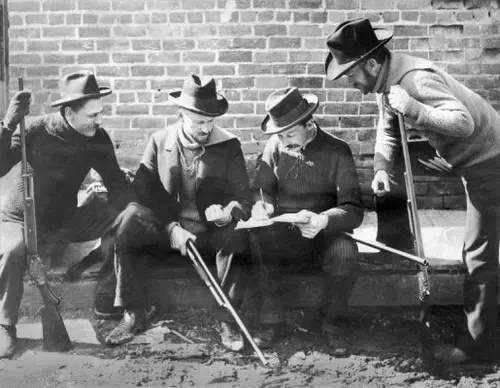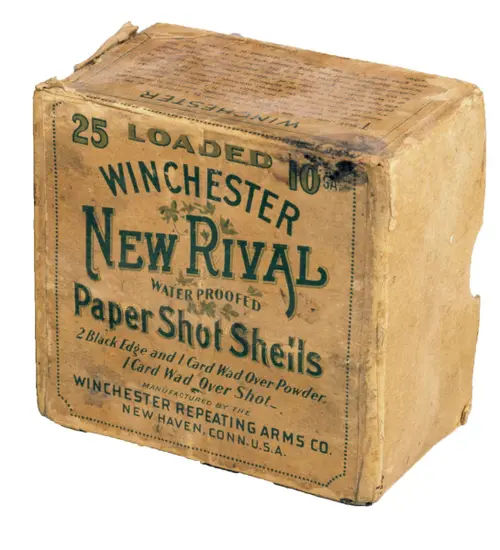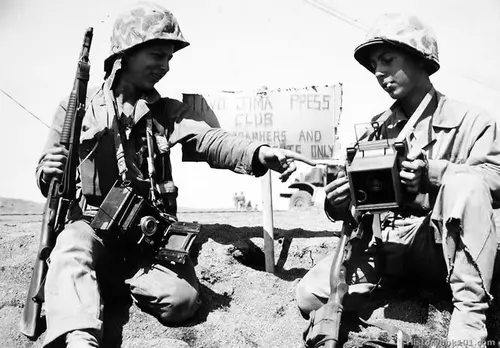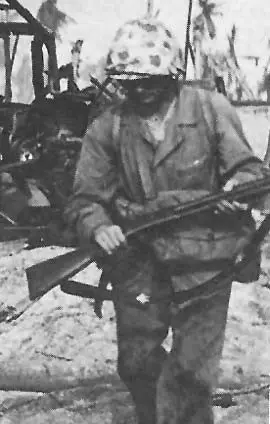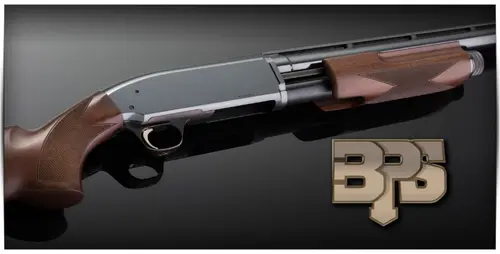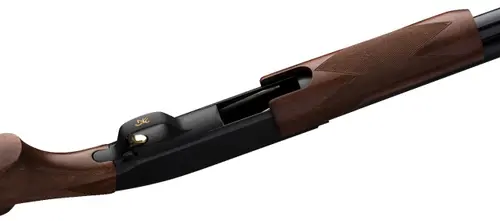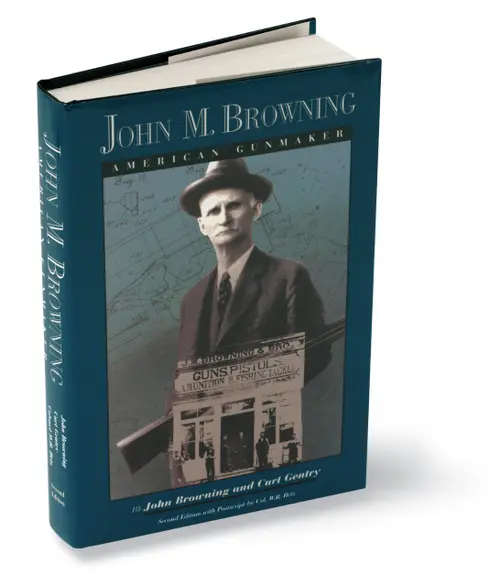John M. Browning’s Greatest Hits - Episode 5
John M. Browning’s Greatest Hits - Episode 5
The Model 1893 and Model 1897 – John M. Browning’s Legendary Pump-Action Shotguns
The Model 1893 and Model 1897 – John M. Browning’s Legendary Pump-Action Shotguns
In our previous episodes we explored John M. Browning’s single shot and lever action rifle designs for Winchester. Now let’s turn our attention to the Browning designs that perfected the pump action shotgun.
In the early 1890s T.G. Bennett, then the Vice President at Winchester Repeating Arms in New Haven asked Mr. Browning to design a new repeating shotgun. Mr. Browning had previously designed the lever-action Model 1887 shotgun for Winchester, which was a robust and reliable but somewhat bulky smoothbore offered in 10 and 12 gauge models.
The Winchester Model 1887 lever-action shotgun. Winchester Arms Collectors Association image.
Reportedly Mr. Browning had originally proposed a pump-action design for the Model 1887, but he was over-ruled by Bennett. Winchester was known worldwide for their lever-action repeating guns, and so Bennett decided every Winchester, even their shotguns should use the lever-action principle.
However, for this new design Mr. Browning prevailed on Bennett to depart from the lever-action and produce a lighter, smoother-operating pump-action repeater. Part of this decision was probably based on the growing public acceptance of slide-action repeaters made by other gun companies of the era.
The nationally-ranked “Four-Bs” trapshooting team sometime in the late 1890s. Left to right are Gus Becker, John and Matt Browning and A.P. Bigelow. Becker holds a Model 1887 while the three others have Browning-designed Winchester pumps. Browning Archives image.
Another part of the design equation was that Mr. Browning, aside from being the country’s best firearms inventor, was also one of the country’s best trapshooters. A member of the famous “Four-Bs” trapshooting team which consisted of brothers John and Matt Browning, along with Gus Becker and A.P. Bigelow. The fearsome foursome were, at the time, among the best clay-crushers in the nation. Becker’s shooting skills were such that he went on to be named to the 1920 United States Olympic team.
Mr. Browning’s first pump-action shotgun design was introduced as the Winchester Model 1893. It was light and smooth operating with a tubular magazine under the barrel, an external hammer and side ejection.
However, major changes in ammunition design quickly imposed limitations on many firearms of the period, the Model 1893 included. Mr. Browning had designed the Model 1893 around the traditional low-pressure black powder shotshells that were then the worldwide standard. However, by the mid-1890s ammunition makers everywhere were embracing a new technology called “smokeless powder” which operated at a much higher chamber pressure.
The Winchester Model 1897 pump-action shotgun. Winchester Archives image.
The open-top receiver on the Model 1893 proved to not be quite strong enough to withstand a steady diet of the new smokeless powder shells, and so Mr. Browning revised the design to better handle the latest ammo. The new Model 1897 retained the external hammer, tubular magazine and side ejection of the earlier gun, but was built on a much stronger steel receiver.
The Model 1897 quickly became the most popular slide action shotgun of the era. Holding six shells, numerous variants and grades of the ’97 were soon introduced, including field, trap, pigeon, brush, riot, tournament, and military trench guns. Both solid frame and takedown versions were available.
The military Model 1897 with steel handguard and bayonet. US Military image.
Two American combat photographers pause to check their gear during the invasion of Iwo Jima in 1945. The cameraman on the left carries a Model 1897 trench gun. US Government image.
One particular role which the Model 1897 became famous was as a close quarters military weapon during WWI. The iconic Winchester smoothbore was fitted with a bayonet lug and a perforated metal handguard above the barrel. Called a “Trench Broom” by friend and foe alike, the military Model 1897 gave great confidence to American troops and struck cold fear into the hearts of the enemy.
The Model 1897 had a long and distinguished production life. More than a million rolled off the Winchester assembly line at New Haven, and it remained in the firm’s product line until the start of WWII. A favorite of America’s soldiers and marines, the Model 1897 takedown trench gun was made until the end of the war and it saw active service for many years to come.
The short-barreled Model 1897 also caught the eye of Hollywood and was used in a number of major action films, including “White Heat,” “The FBI Story,” “The Professionals,” “Bullit,” “The Wild Bunch,” “The Untouchables” and “Pearl Harbor.”
The spirit of John M. Browning’s design genius lives on today in the Browning Pump Shotgun, the world-famous BPS. The BPS has a solid reputation for long-lasting durability and an uncanny ability to keep on working in spite of what Mother Nature does to stop it. This shouldn’t come as a surprise because the BPS has what most other pump shotguns don’t — features like rigid dual machined steel action bars, a forged and machined steel receiver, a convenient top-tang safety and bottom ejection for ambidextrous operation, and (of course) legendary Browning balance and handling.
Today’s Browning BPS is available in numerous gauges and styles with wood or synthetic stocks, including the popular Micro models for smaller-statured shooters.
Browning has a BPS that will be perfect for you, whatever game you hunt and whatever shotgun game you play.
Remember, when you bring a BPS to your shoulder, you’re pulling the trigger on more than 130 years of Browning shotgun design experience.
In our next episode – John M. Browning designs the Model 1895, and brings the lever- action rifle into the 20th century.
Copyright Browning, 2018, 2019. Written by Browning staff writer Scott Engen. Photos are copyright by Browning and/or Winchester Repeating Arms (used with permission) or are in the public domain or used with attribution as indicated in the caption.
Born in 1855, John M. Browning dedicated his life to inventing revolutionary firearms that were desitned to shape the future. Read about him in this riveting biography. Click Here to buy the book.



